Fractions Greater Than or Less Than 1/2 -> volume
Volume
Volume is a measure of the amount of space occupied by a three-dimensional object. It is the measure of how much a container can hold or the amount of space an object occupies.
Units of Volume
The most common units of volume are cubic units such as cubic centimeters (cm3), cubic meters (m3), and cubic feet (ft3). These units are used to measure the volume of solid objects.
Volume of Regular Shapes
The volume of regular shapes such as cubes, rectangular prisms, and cylinders can be calculated using specific formulas. For example:
- The volume of a cube is calculated using the formula: V = s3, where s is the length of one side of the cube.
- The volume of a rectangular prism is calculated using the formula: V = l × w × h, where l is the length, w is the width, and h is the height of the prism.
- The volume of a cylinder is calculated using the formula: V = πr2h, where r is the radius of the base and h is the height of the cylinder.
Volume of Irregular Shapes
For irregular shapes, the volume can be determined by using the water displacement method or by dividing the shape into smaller, regular shapes and then summing their volumes.
Real-life Applications
Understanding volume is important in real-life applications such as measuring the capacity of containers, calculating the amount of liquid that can be held in a tank, and determining the space occupied by objects in a room or a storage area.
By understanding volume and how to calculate it, we can solve practical problems related to space and capacity in various contexts.
Remember to always include the appropriate units when expressing volume to ensure clarity in communication.
I hope this explanation helps you understand the concept of volume!
.◂Math Worksheets and Study Guides Second Grade. Fractions Greater Than or Less Than 1/2
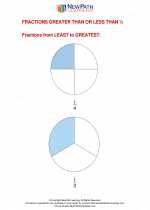
 Worksheet/Answer key
Worksheet/Answer key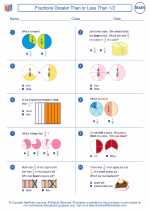
 Worksheet/Answer key
Worksheet/Answer key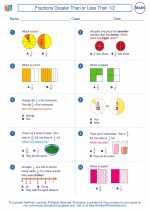
 Worksheet/Answer key
Worksheet/Answer key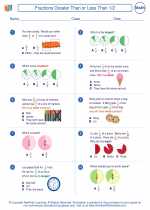
 Worksheet/Answer key
Worksheet/Answer key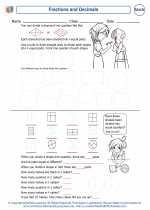
 Worksheet/Answer key
Worksheet/Answer key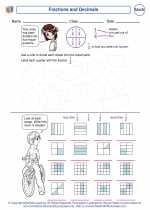
 Vocabulary/Answer key
Vocabulary/Answer key
